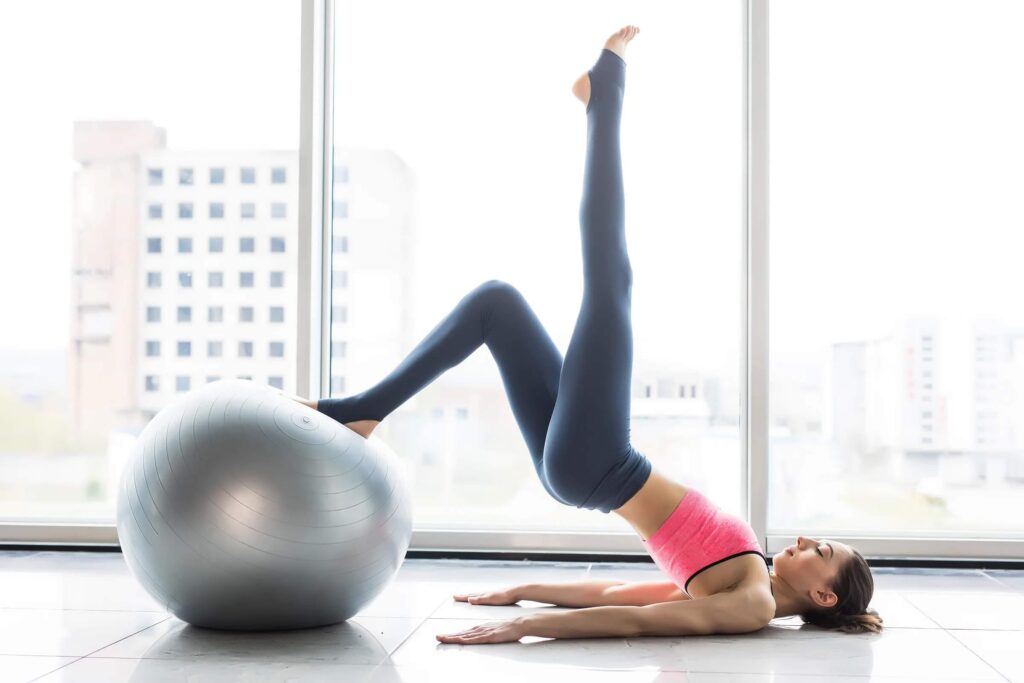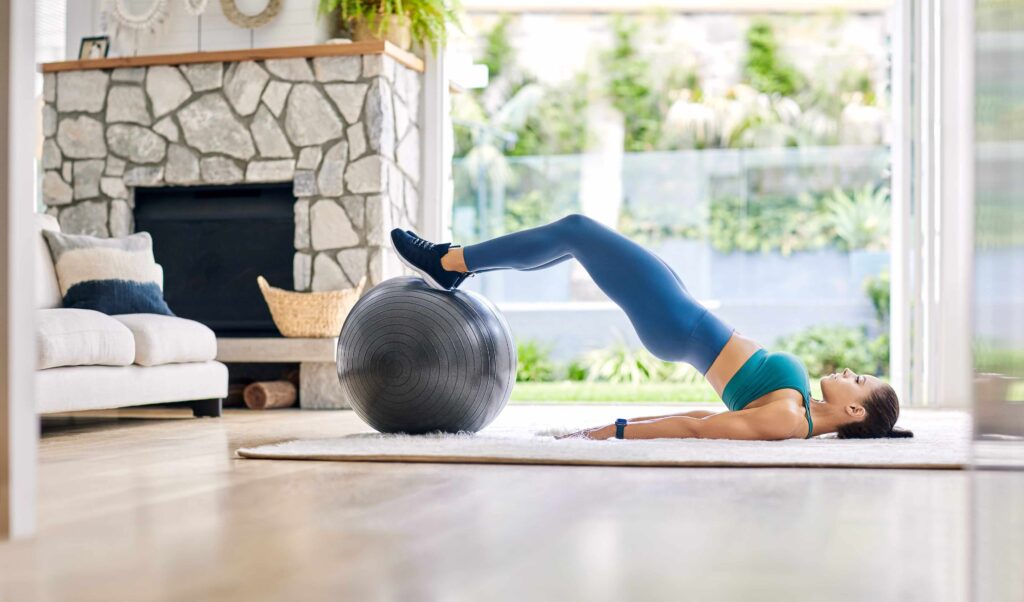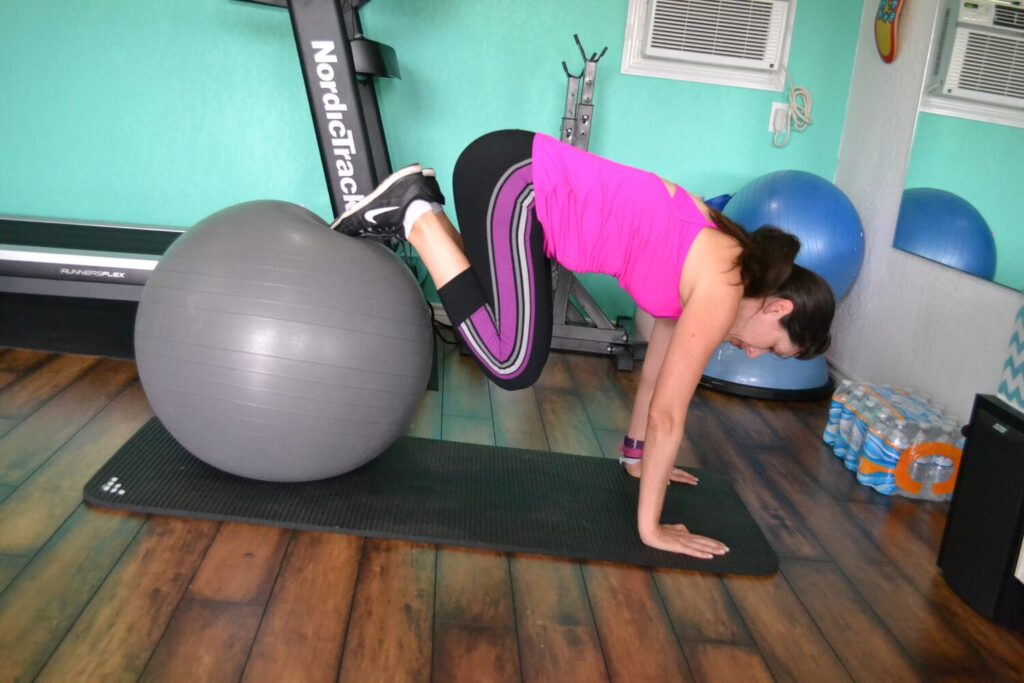Understanding the benefits of a Pilates ball workout
The Pilates ball, also known as a stability ball or Swiss ball, has gained significant popularity in fitness routines worldwide. This versatile piece of equipment not only enhances the effectiveness of workouts but also provides numerous benefits that cater to different fitness levels. Incorporating a Pilates ball into your exercise regime can lead to improved physical performance and overall well-being.
Enhancing balance and stability
A primary advantage of using a Pilates ball is its ability to enhance balance and stability. When performing exercises on the ball, your body works harder to maintain equilibrium. This engaging of stabilising muscles makes your workouts more dynamic and effective.
By focusing on balance, you also improve proprioception, which is your body’s awareness of its position in space. As you strengthen your stabiliser muscles, you become more adept at controlling movements, not only during workouts but also in daily activities. Over time, this improved balance can lead to better athletic performance and a reduced risk of injury.
Furthermore, the challenge of maintaining balance on an unstable surface like the Pilates ball can be particularly beneficial for athletes looking to enhance their performance in sports that require agility and coordination. For instance, sports such as gymnastics, dance, and even football can see marked improvements in performance through the incorporation of balance training with a Pilates ball. Additionally, this heightened sense of balance can contribute to better body awareness, allowing individuals to execute movements with greater precision and confidence.

Strengthening core muscles
The Pilates ball is particularly effective for targeting the core muscles. The core includes the abdominal muscles, back muscles, and pelvic muscles, which are vital for overall strength and stability. Exercises performed on the ball require your core to engage continuously to maintain stability.
By effectively working these muscles, you enhance your body’s ability to support movements in other exercises, thereby increasing your overall strength. A strong core also aids in improving posture, which can be a significant factor in reducing back pain and promoting overall spinal health.
Moreover, the versatility of the Pilates ball allows for a wide range of exercises that can be tailored to different fitness levels. From beginners to advanced practitioners, the ball can be used to modify traditional exercises, making them more challenging or accessible. For instance, a simple crunch can be transformed into a more effective core workout by performing it on the ball, which requires greater engagement of the stabilising muscles. This adaptability makes the Pilates ball an excellent addition to any fitness programme, ensuring that individuals can continually challenge themselves and progress in their strength training.
Improving flexibility and posture
Incorporating a Pilates ball into your routine helps to improve both flexibility and posture. Many exercises require dynamic stretching, which can enhance muscle flexibility and joint mobility. As your flexibility improves, you are likely to notice a greater range of motion in your workouts and daily functions.
Moreover, using a Pilates ball encourages proper alignment during exercises, which translates to better posture. Engaging the core and back muscles as you exercise helps to build strength in the areas that support your spine. This can be particularly beneficial for those who spend long hours sitting, as it combats the slouched posture typical of sedentary lifestyles.
Additionally, the use of a Pilates ball can facilitate a deeper connection between the mind and body, as it encourages mindfulness during movement. Practising awareness of your body’s alignment and the way it moves on the ball can lead to improved body mechanics in everyday life. This heightened awareness not only contributes to better posture but also fosters a more holistic approach to fitness, where individuals are encouraged to listen to their bodies and make adjustments as needed. As a result, the Pilates ball serves not just as a tool for physical enhancement, but also as a means to cultivate a more mindful and intentional approach to movement and exercise. Click here to get about small Pilates ball exercises to improve strength and flexibility.
Choosing the right Pilates ball
Selecting the ideal Pilates ball is crucial to getting the most out of your workouts. With various sizes, materials, and designs on the market, it’s essential to consider several factors when choosing the one that will best suit your needs. Below are some key considerations to keep in mind.
Considering size and weight
The size of the Pilates ball matters significantly; a ball that is too small or too large can lead to discomfort or injury. To determine the correct size, consider your height and the ball’s diameter:
- Under 5’0” – 45 cm ball
- 5’0” to 5’5” – 55 cm ball
- 5’6” to 6’0” – 65 cm ball
- Over 6’0” – 75 cm ball
Additionally, consider the weight of the ball for specific exercises. Heavier balls provide more stability, while lighter ones can enhance balance challenges. For instance, if you are focusing on core strengthening, a heavier ball may help you maintain better control during movements, whereas a lighter ball can be beneficial for dynamic exercises that require agility and coordination.

Material and durability factors
The material of the Pilates ball is another important aspect. Look for balls made of burst-resistant materials, which ensure safety during workouts. A quality stability ball can withstand significant weight and pressure, reducing the risk of sudden deflation. Furthermore, many manufacturers now offer eco-friendly options made from non-toxic materials, catering to environmentally-conscious consumers who wish to maintain a sustainable fitness routine.
Moreover, the surface texture of the ball is worth considering, as it can affect grip during exercises. A textured surface often offers a better grip, preventing slipping and enhancing safety during workouts. Some balls even come with additional features, such as anti-slip coatings or ergonomic designs, which can further improve your experience and performance.
Comfort and ease of use
User comfort is paramount when choosing a Pilates ball. A ball should feel sturdy yet comfortable when inflated to the recommended size. Make sure it allows for adequate support while performing various exercises. It’s also advisable to test the ball if possible, as personal preference plays a significant role in comfort levels.
Additionally, ease of inflation and deflation can make a significant difference in your workout experience. Opt for models that come with a pump or are easy to inflate without specialised equipment, ensuring you can get started quickly. Some balls are designed with quick-release valves, allowing for hassle-free deflation and storage. This feature is particularly useful for those with limited space, as it enables you to easily pack away your equipment when not in use, keeping your workout area tidy and organised.

Essential Pilates ball exercises for beginners
If you’re new to using a Pilates ball, starting with fundamental exercises is a great idea. These exercises will help you build confidence and acclimatise your body to the ball’s challenges. Below are three essential exercises for beginners.
The Pilates ball squat
The Pilates ball squat is an excellent exercise to engage the thigh, glute, and core muscles. To perform this exercise:
- Stand with your back against a wall and place the ball between your back and the wall.
- Slowly slide down the wall, allowing the ball to roll down as you bend your knees into a squat position.
- Ensure your knees remain in line with your toes, and hold the position for a moment before pushing back up to the starting position.
The Pilates ball push-up
Another beneficial exercise for beginners is the Pilates ball push-up. This variation targets your chest, shoulders, and triceps while also engaging your core. Here’s how to do it:
- Begin by kneeling on the floor and place your hands on the ball, ensuring that your elbows are directly under your shoulders.
- Extend your legs behind you, balancing on the balls of your feet so your body forms a straight line from head to heels.
- Lower your chest towards the ball in a controlled manner, then push back up to the starting position.
The Pilates ball plank
The Pilates ball plank is excellent for strengthening the core and improving stability. To execute this exercise:
- Start by placing your forearms on the ball, ensuring that your elbows are shoulder-width apart.
- Extend your legs behind you, balancing on your toes so that your body forms a straight line from head to heels.
- Hold this position for up to 30 seconds, ensuring that your core remains engaged throughout.
Advanced Pilates ball exercises for a full-body workout
The Pilates ball pike
The Pilates ball pike is an excellent full-body workout that challenges the core, shoulders, and hamstrings. To perform this exercise:
- Start in a plank position with your shins resting on the ball and your hands placed shoulder-width apart on the ground.
- Engage your core and, while maintaining a straight line from head to heels, roll the ball towards your chest by lifting your hips towards the ceiling.
- Lower your hips back down to the starting position in a controlled movement.
The Pilates ball jackknife
The Pilates ball jackknife combines core strength and flexibility. Here’s how to execute it:
- Begin in a plank position with your feet resting on the ball and your hands on the ground.
- Engage your core and pull your knees towards your chest, rolling the ball in as you lift your hips.
- Return to the starting position and repeat.
The Pilates ball roll-out
The Pilates ball roll-out is a fantastic move for advanced practitioners aiming to challenge their core. To perform this move:
- Kneel on the floor with the ball in front of you, placing your forearms on top of the ball.
- Slowly roll the ball forward while extending your arms and keeping your body straight from head to knees.
- Engage your core to prevent your back from sagging, then roll the ball back towards you to return to the starting position.
Incorporating the Pilates ball into your full-body workouts can significantly enhance your fitness routine. With its multifaceted benefits, including improving stability, core strength, and flexibility, this simple piece of equipment can transform your training experience. Begin with the essentials, gradually progress to advanced exercises, and enjoy the journey to a stronger, healthier you.
